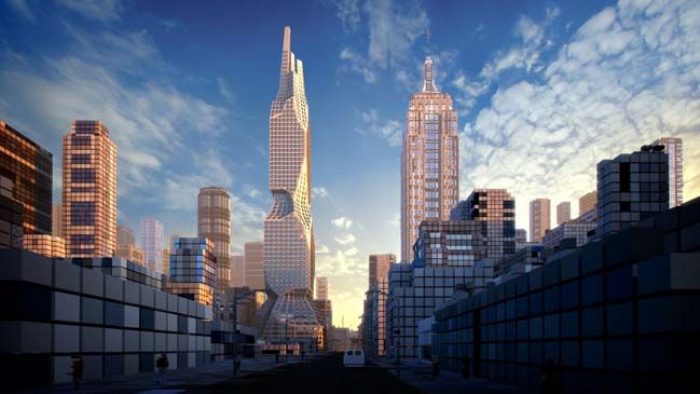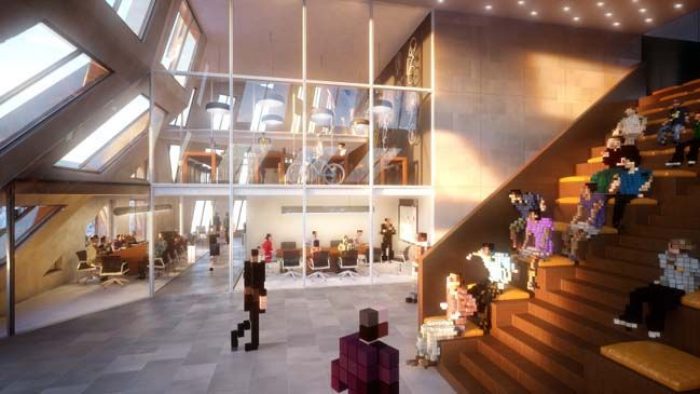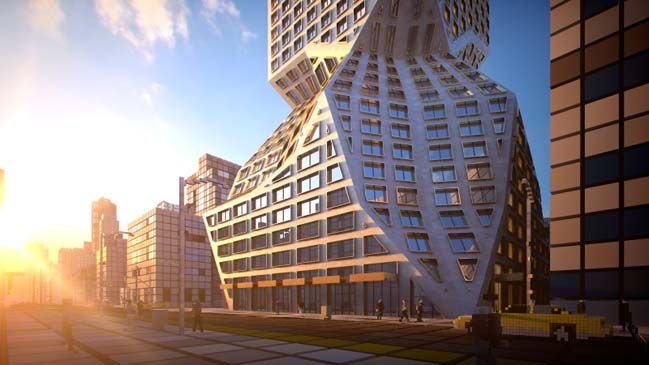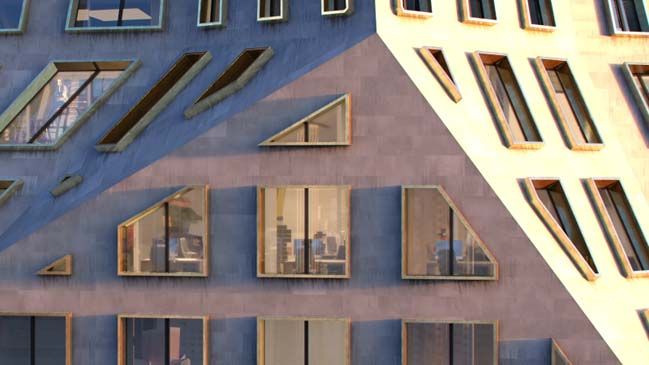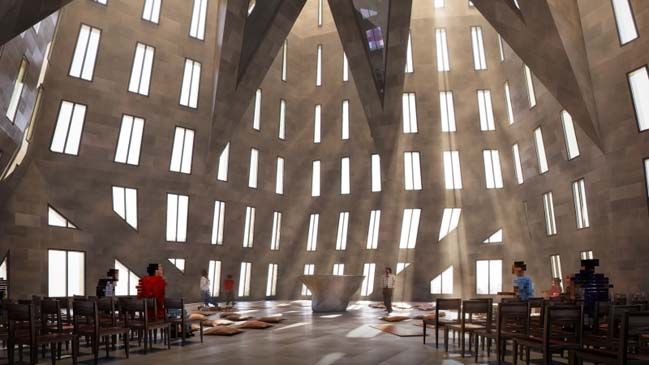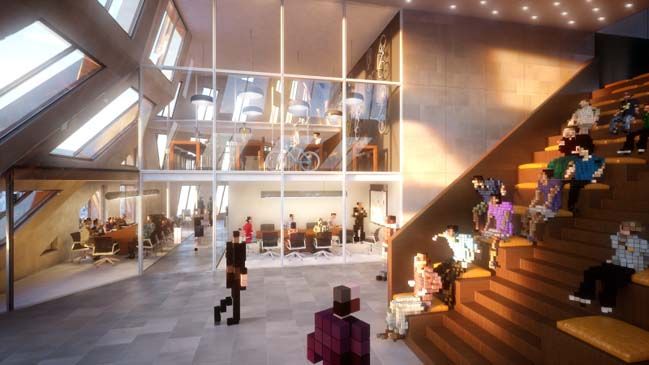Skyler
Hollwich Kushner, a New York based architecture studio co-run by Matthias Hollwich, proposes an engaging piece of social architecture: Skyler. The project aims to address an existential issue and place it in the context of urban planning: how to age well.
The proposed building prototype is for an intergenerational skyscraper, which will accommodate representatives of different age groups by promoting co-living and exchange between generations. The skyscraper’s monumental silhouette echoes the whimsical modernism of the 1930s architectural Art Deco, with a cladding beautifully fusing in slick, curvy forms. The unique sculptural shape creativelly celebrates the transformation of aging and provides a unique point of view from each side – something that comes with experience.
The project is an outcome of a personal and professional growth that came to be aware of the limitedness of time. As surpassing half of the lifespan typical for men, the architect wrote New Aging:Live Smarter Now to Live Better Forever, where he outlines smart, simple ideas to help us experience growing old in a creative and constructive way and turn it into opportunity.
Skyler is an architectural response to these ideas. The skyscraper will house minors, working adults and seniors, providing 600 residential units and different facilities suitable for each age group. The building will offer pooled apartments to eliminate the isolation in traditional urban apartments. Mobility and openness will be expanded by shared transportation services, which will alleviate everyday activities such as laundry and shopping.
A business continuation center will engage retirees and promote active lifestyle, health and religious centers will meet physical and spiritual needs. The result will be a diverse and socially active community enjoying shared lobbies and lounges and easily navigating through the interwoven spaces of the building’s inner infrastructure.
Keeping aging in mind when developing new buildings will be key in the future, and present a competitive advantage to developers who start actively adjusting amenities, services, and apartment configurations today, says the architect.
Longevity is the issue of tomorrow. Cities will need to adapt to the social changes that will come as a result of an increasingly aging population and promote participation and inclusiveness .
By: Sabina Karleva
Courtesy of Hollwich Kushner
Courtesy of Hollwich Kushner
Courtesy of Hollwich Kushner
Courtesy of Hollwich Kushner
Courtesy of Hollwich Kushner
Courtesy of Hollwich Kushner
Courtesy of Hollwich Kushner



